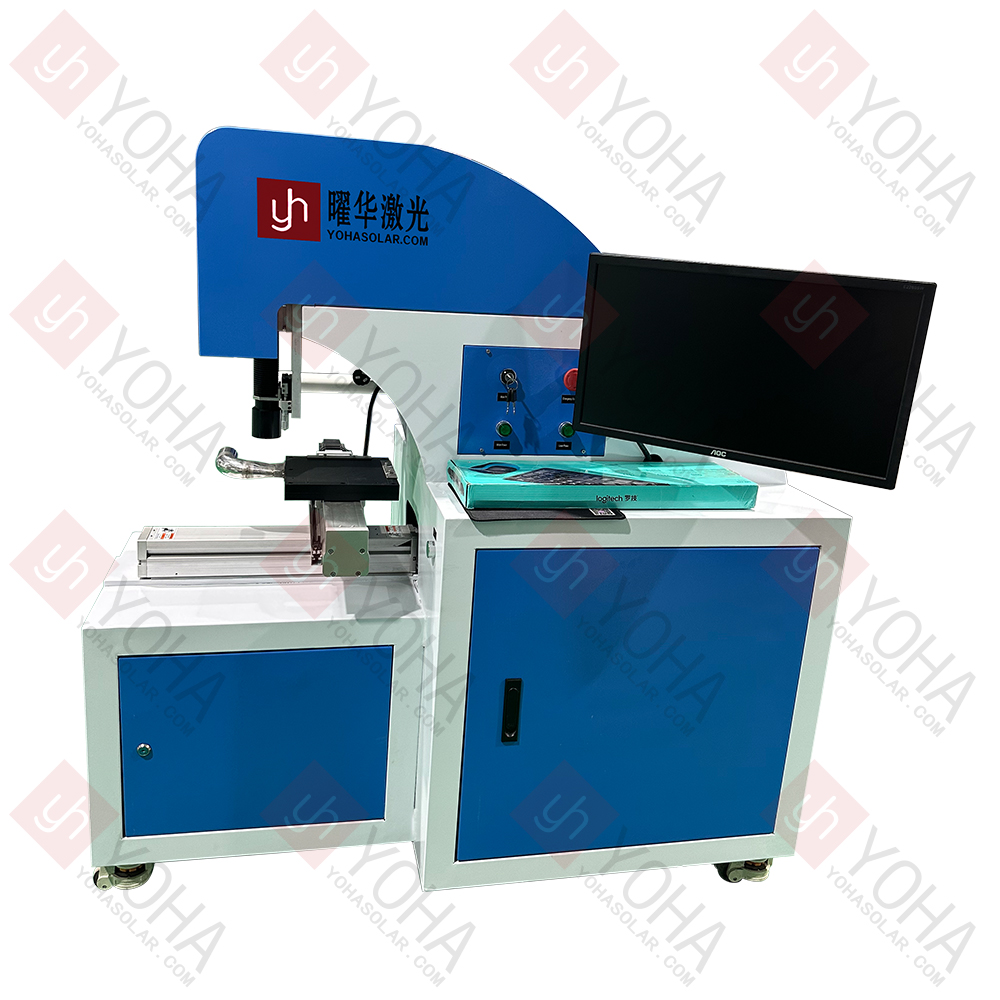Welcome to Wuhan Yoha Solar Technology Co., Ltd!
common problem
Site Map
Language:
 Chinese
Chinese
 English
English
Welcome to Wuhan Yoha Solar Technology Co., Ltd!
common problem
Site Map
Language:
 Chinese
Chinese
 English
English
The Manual Solar Cell Fiber Laser Scribing Machine is a specialized precision processing equipment designed for the photovoltaic industry. It utilizes a high-power-density fiber laser beam, controlled precisely by an operator via a manual movement platform, to perform rapid, clean, non-contact scribing or segmentation of crystalline silicon or thin-film solar cells. This enables efficient cell interconnection, improves module yield rates, and significantly reduces micro-cracks and breakage rates.

High-Precision Non-Contact Laser Processing: Employs a high-energy-density fiber laser beam for processing, ensuring complete non-contact with the material surface. This avoids mechanical stress, significantly reduces micro-cracks, edge chipping, and breakage rates, guarantees smooth and flat cutting edges on the cells, maximizes protection of the cell's electrical performance, and enhances module yield and long-term reliability.
Manual Flexible Operation & Precise Control: Equipped with a high-precision manual movement platform (typically X-Y two-dimensional), allowing operators to intuitively, flexibly, and finely control the movement path and speed of the laser focus on the cell. Ideal for R&D, experimentation, sampling, or cutting tasks for special-sized cells requiring small batches, multiple varieties, and high precision. Simple operation with a low learning curve.
Customized Photovoltaic Process & High Efficiency/Cleanliness: Optimized specifically for solar cells (crystalline silicon/thin-film). Laser parameters (power, frequency, pulse width, speed) are flexibly adjustable to match the optimal scribing/cutting requirements of cells with different thicknesses and materials. The laser process involves no tool wear and generates no dust pollution, keeping the processing area clean, reducing subsequent cleaning steps, and improving overall processing efficiency and environmental friendliness.
Stable, Reliable & Economical Equipment: Features long-life, maintenance-free fiber lasers with high photoelectric conversion efficiency, ensuring stable and reliable operation. The overall structure is relatively simple and compact, with significantly lower acquisition and maintenance costs compared to fully automated equipment. It represents a cost-effective solution for achieving high-quality, low-damage cell scribing/segmentation tasks in laboratories, pilot lines, or small-scale production.
| Item | Parameter |
|---|---|
| Model | YHC-30F |
| Laser | 1064nm Fiber Laser |
| Beam Quality (M²) | 1.3 |
| Worktable Travel | 800×300mm |
| Max. Scribing Speed | 600mm/s |
| Scribing Precision | ≤0.02mm |
| Auto Positioning Accuracy | ≤±0.05mm |
| Cooling System | Air Cooling |
| Processing Range | 230×230mm |
| Compressed Air | 0.5~0.8MPa |
| Power Supply | 220V/50HZ |
| Dimensions | 2900×930×1740mm |
PV Cell R&D & Process Development: Used in laboratories, research institutes, and R&D departments of cell/module manufacturers for cutting process research and parameter optimization of new cell technologies (e.g., HJT, TopCon, perovskite tandem cells), new substrates (ultra-thin silicon wafers, flexible substrates), or novel interconnection processes (e.g., screenless, SMBB). Its manual flexibility allows for rapid adjustment of laser parameters (power, frequency, speed, path) and micron-level precision cutting tests to evaluate cut quality (edge chipping, micro-cracks, heat-affected zone), efficiency, and impact on cell electrical performance, providing critical data support for new process mass production.
Small-Batch Production & Custom Specifications: Suitable for pilot lines, sampling centers, or small-scale module production. Handles cutting requirements for non-standard size cells (customized modules), irregularly shaped cells, experimental cell groups (e.g., BIPV prototypes), or special materials (e.g., IBC cells). Manual operation adapts flexibly to varying product specifications and cutting paths, meeting the high-precision, low-damage cutting demands of small-batch, multi-variety orders without the cost of expensive fully automated lines.
Product Quality Sampling & Failure Analysis: Used in quality inspection laboratories of cell manufacturers or module factories for Destructive Physical Analysis (DPA) of production line cells or finished modules. Enables precise cutting of specific areas (e.g., edges, busbar intersections, suspected hidden crack points) to prepare samples for observing microstructures of cut surfaces, detecting micro-crack propagation, assessing cutting process consistency, or analyzing component failure causes (e.g., broken busbars, fragments), providing direct evidence for process improvement and yield enhancement.
Vocational Education & After-Sales Repair Support: Serves as a practical teaching device in PV vocational schools and training institutions. Its relatively intuitive and safe operation (non-contact, enclosed light path) and clear demonstration of laser cutting principles and effects make it an ideal platform for training personnel in PV cell precision processing technology. Also supports module factories or third-party repair stations for precise cutting of small quantities of replacement cells or removal of locally damaged cells during component disassembly and repair.
TOP
18086473422
MESSAGE
